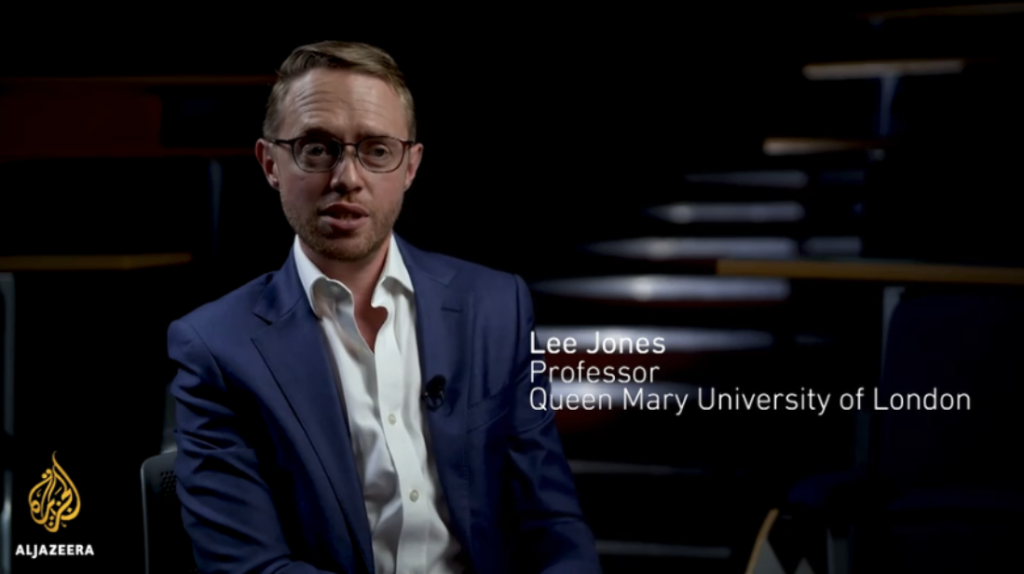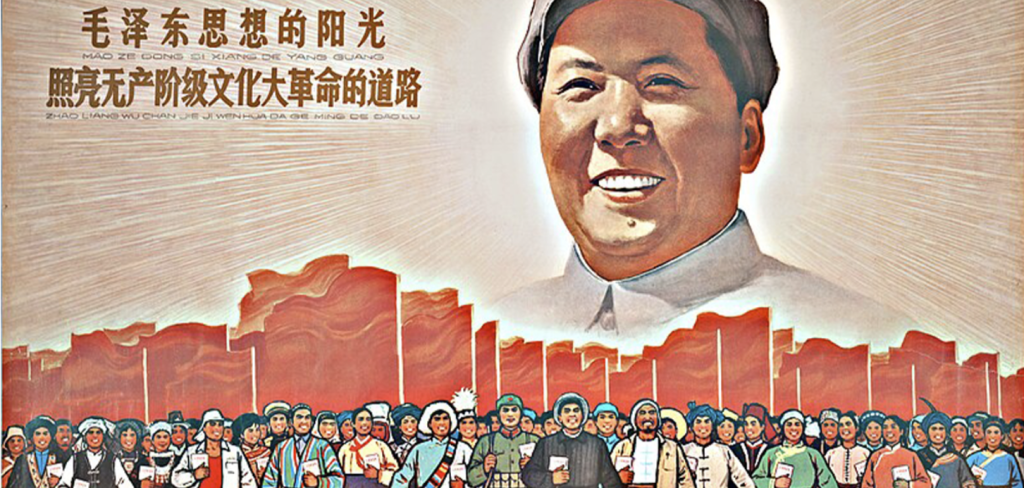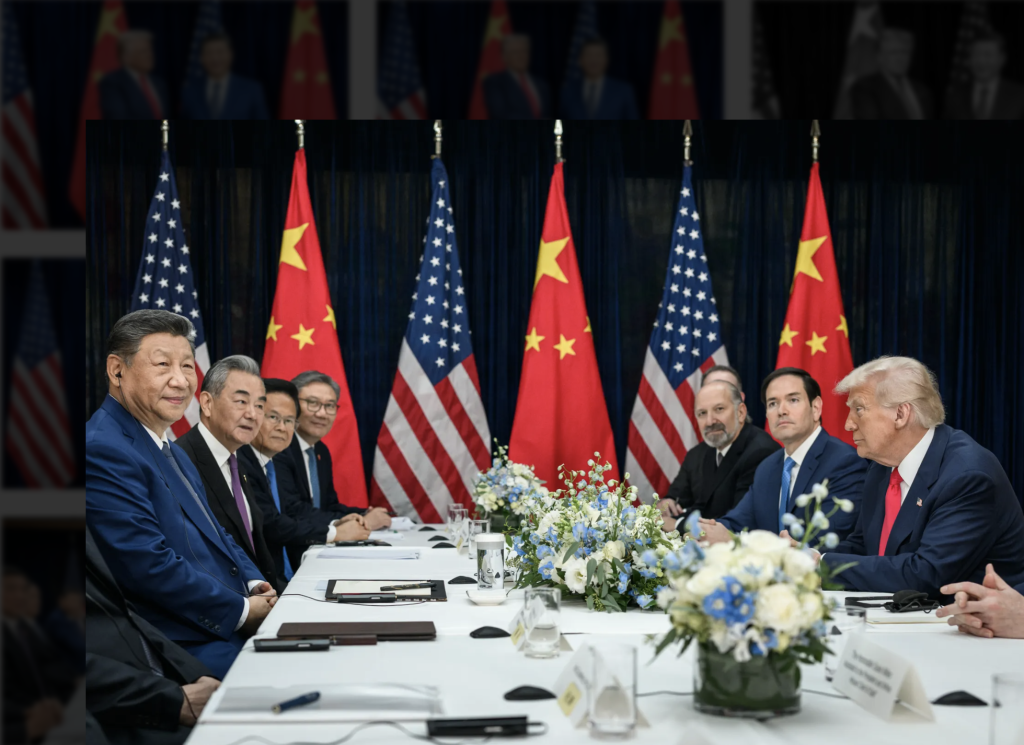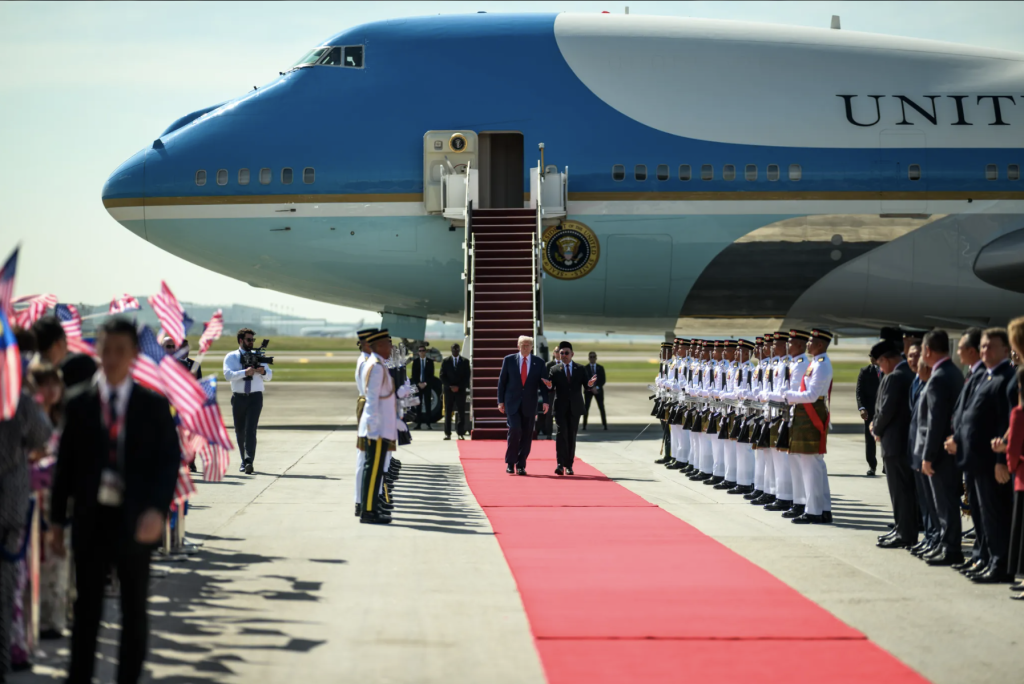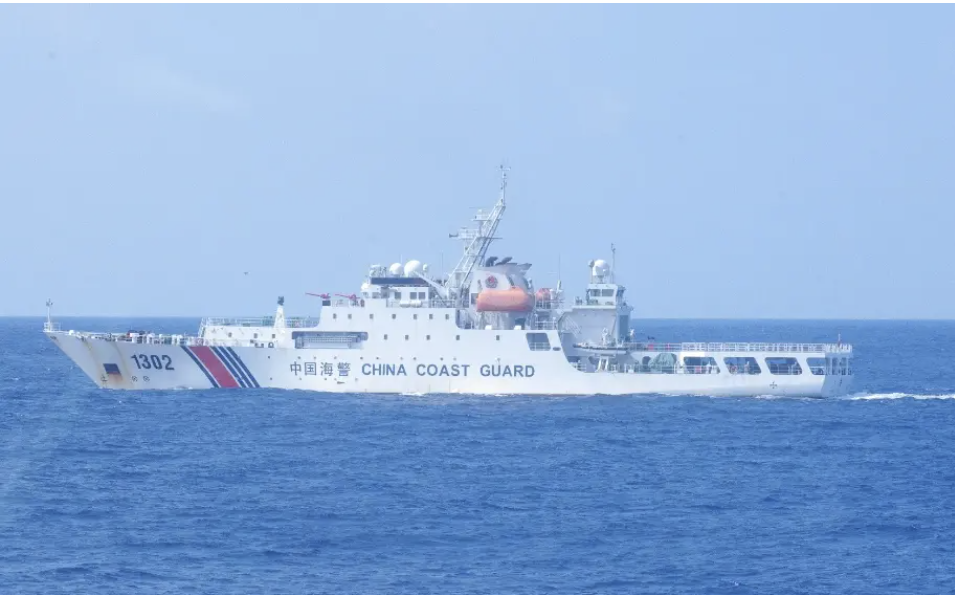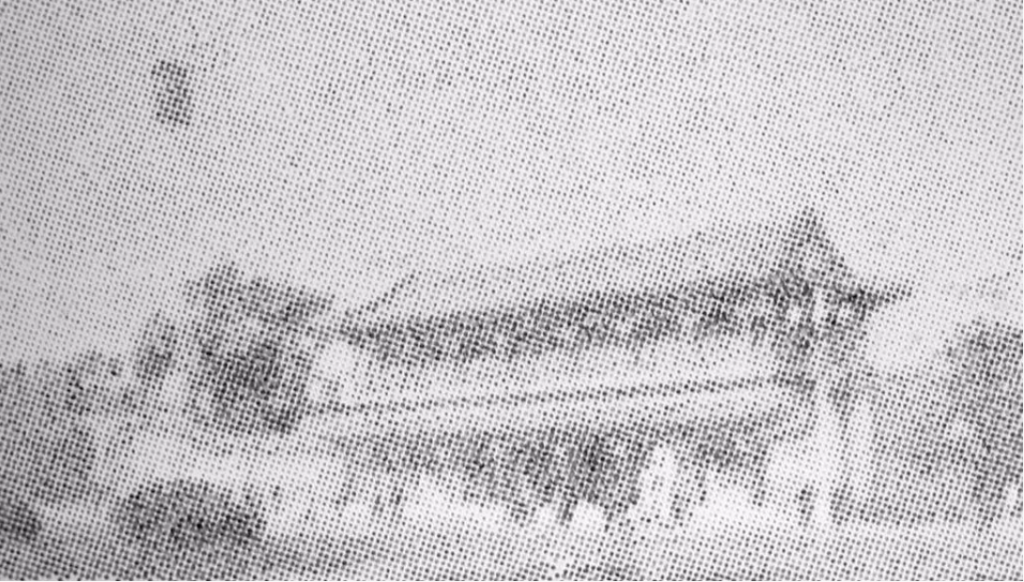In Praise of People-to-People Diplomacy: An excerpt from People’s Diplomacy: How Americans and Chinese Transformed US-China Relations during the Cold War
- Analysis
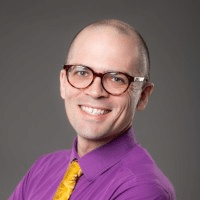 Nick Zeller
Nick Zeller- 07/05/2024
- 0
[Editor’s Note: Diplomacy is an inherently elite affair. It is officials and heads of state, not tourists, academics, and athletes, that conduct the marquee work of signing treaties, opening embassies, and setting trade policy. Yet, people-to-people diplomacy is never very far from view underneath all the summitry. In the United States, a small but growing number of university students and researchers from the People’s Republic of China have had their lives and careers severely disrupted as a result of diplomatic tension between the two countries. Meanwhile, Chinese President Xi Jinping has emphasized the need to improve China’s tourism industry and specifically encouraged young Americans to visit China. In his new book, Kazushi Minami, Associate Professor at the Osaka School of International Public Policy at Osaka University, demonstrates the enduring importance of people-to-people connections in U.S.-China relations. Between Richard Nixon’s initial visit to China in 1972 and Jimmy Carter’s normalization of U.S.-China relations in 1979, people from America and China travelled and hosted their counterparts in science, tourism, sports, and the arts. Some of these exchanges were high profile public spectacles; others were not. Cumulatively, however, Minami makes the case that it was individuals involved in people-to-people diplomacy that did the on-the-ground work of building a new bilateral relationship. Below is an excerpt from Minami’s book People’s Diplomacy: How Americans and Chinese Transformed US-China Relations that looks at the rocky beginning of people-to-people diplomacy in the hard sciences.
Nick Zeller, senior program associate for China Focus and editor of the U.S.-China Perception Monitor’s English language site, conducted an interview with Kazushi Minami about his book for the New Books Network podcast. Listen to the full interview here.]
[In 1971, Arthur W. Galston and Ethan Signer were among the first American scientists to travel to the People’s Republic of China.]
Galston and Signer blazed a new trail of scientific exchanges with China. Following their trip, dozens of articles about Chinese sciences, particularly medicine, appeared in professional journals, while the Committee on Scholarly Communication received hundreds of letters from scientists hoping to (re)build contact with Chinese colleagues. The Americans were anxious to launch formal exchange programs. In May 1971, the CSC staff secretary Anne Keatley, traveling in China with her husband and the Wall Street Journal writer Robert Keatley, met Zhou Enlai and submitted a letter from the National Academy of Sciences, prompting the Chinese Academy of Sciences to embark on “the task of re-establishing the intellectual ties that, for so long, characterized the relations between the scholars of China and of the United States.” Zhou assured Keatley that despite “lack of preparation,” scholarly exchanges would “surely and gradually increase.” Keatley flew to Ottawa that summer and winter to deliver two more similar letters to the Chinese embassy in Canada, but they were left unanswered. Beijing apparently preferred the Federation of American Scientists (FAS), a group with no ties to the government, to the CSC, a sister organization of the government-affiliated NAS. When a FAS delegation toured China in mid-1972, Pan Chuntong, chief of the CAS foreign affairs team, proposed to make the FAS an exclusive host, not a cohost with the CSC, for China’s first science delegation. As John Holdridge of the NSC suspected, Beijing’s flip-flops probably reflected “divergencies of opinion” over how to conduct scientific exchanges with the United States.
These divergences soon narrowed. The CSC chairman Emil Smith, a biochemist at the University of California, Los Angeles, led the first CSC delegation to China in May 1973 to discuss scientific exchanges with the Science and Technology Association. The STA chairman Zhou Peiyuan, a prominent US-educated physicist and president of Peking University, was tepid nonetheless. He called mutual scholarly visits “good” “in principle,” but underscored the lack of diplomatic relations as a serious constraint. The CSC and the STA did agree on exchanging about a dozen groups yearly, but the “government-facilitated” mechanism gave Beijing a veto. Still, the CSC rejoiced at the opportunity to “increase American understanding of Chinse society and values” and “advance toward international scientific cooperation” by “institutionalizing” and “expanding” scholarly exchanges with China. The CSC and the STA would exchange 572 researchers in fifty-seven delegations between 1973 and 1977. Although about three-fourths of American scientists who traveled to China in this period did so through ad hoc arrangements with various Chinese hosts, the CSC-STA line provided the only established channel of scholarly communication.
American and Chinese scientists had asymmetric interests, which made scholarly exchanges imbalanced and embattled from the beginning. The Chinese were narrowly interested in applied science, and more than half of the STA groups visited commercial factories and laboratories using advanced technology in computers, lasers, or hydraulics, while shunning institutions of basic research. The operation reeked of industrial espionage, as some hosts complained. The Chinese wrote lengthy technical reports detailing their findings upon return, which were circulated for public use. The espionage allegation, regardless of its validity, engendered fatigue and misgivings among the hosts, including MIT and Bell Laboratories. One company representative predicted that “the more [Chinese] delegations that come to the U.S., the more difficult it will be to get companies to accept visits” “unless [they] receive something of equivalent value in return.” Chary of losing the commercial edge, the National Bureau of Standards even ordered the CSC to nix the industrial automation delegation three days before its arrival in the fall of 1975. The Americans, on the contrary, were broadly interested in fostering cooperation in such fields as biology, seismology, epidemiology, geology, chemistry, and archaeology, while not expecting to learn much new information during their visits. They grumbled that the Chinese escorted them to over a dozen schools, laboratories, and factories in a matter of a few weeks—just like the Chinese proverb “viewing flowers from horseback” (qi ma guan hua)—while rejecting further cooperation afterwards. American scientists satirized their experience as “scientific tourism.”
The CSC prodded Washington to fix the problem. Smith sent a letter to Henry Kissinger before his November 1973 trip to China, asking the secretary of state to negotiate longer-term research visits “at a high governmental level.” But the White House had reservations. Aware of Jiang Qing’s criticism of Sino-American scientific exchanges, NSC staffer Richard Solomon had warned Kissinger in the previous summer that exchange programs involving “China’s scientific and academic communities” might be adding to Zhou Enlai’s “political vulnerability.” Solomon promised to make the CSC “sensitized to the larger interest that is being served by exchange pro-grams” and “discourage any uncoordinated approaches” to Beijing—but his words failed to sway the CSC, which believed that advancing scientific ex-changes could assist Zhou. During Kissinger’s visit, Arthur Hummel, acting assistant secretary of state for East Asian and Pacific affairs, did propose longer-term visits in agricultural research, earth resources surveying, and language study to Lin Ping, director of the Foreign Ministry’s American and Oceanic Affairs Department. “This will be possible,” Lin replied flippantly, “once the conditions are right.” The message was clear: The conditions were not right. In the summer of 1974, Qian Dayong, political counselor at the Chinese Liaison Office, told Alexander Eckstein that “the only difficulty” in scientific exchanges was that the Americans were “pressing us for longer term exchanges.” “This is not practical and possible at the present time,” he stated.
Chinese officials proved less unrelenting toward their compatriots. Chinese American physicists Yang Zhenning (Chen-Ning Yang) and Li Zhengdao (Tsung-Dao Lee), the 1957 Nobel Prize laureates at Stony Brook University and Columbia University, returned home in July 1971 and September 1972, respectively, for the first time since they had left China in 1946. Yang and Li, like many of their colleagues, praised China’s scientific achievements, extolled the “serve the people” ethic among Chinese scientists, and promoted public interest in China through talks and writings. Yang and Li were different from most foreign-national scientists visiting China, because they could make their critical voices heard by Chinese leaders. In his talk with Zhou Enlai in July 1972, Yang lamented the neglect of theoretical research and scarcity of international exchanges. The premier nodded in concurrence and forwarded his suggestions to Zhou Peiyuan, who did not fail to understand what was expected of him. That October, the STA chairman penned a controversial article in the Guangming Daily, urging scientists around the country to strengthen theoretical research. “Science (li) and engineering (gong), applied and theoretical, both need to be emphasized,” it read. “We should not focus on one and neglect the other.” Li made similar points in May 1974. After visiting Fudan University in Shanghai, he argued that China should pay more attention to basic research and nurture young talent for theoretical science. Li later met Premier Zhou Enlai, Vice Premier Deng Xiaoping, and Chairman Mao Zedong, and his words mesmerized them all. Out of nationalism and internationalism, Yang and Li made themselves China’s most influential science advisers at the time.
Yang Zhenning, Li Zhengdao, and hundreds of other Chinese American scientists electrified their colleagues in China, still suffering from the shackles of the Cultural Revolution. Unlike other Americans, they were often allowed to spend months in research institutes, hold many lectures, work with local scholars, and sometimes coauthor research papers in Chinese journals. Yang, for instance, collaborated with Fudan mathematician Gu Chaohao for about ten days in 1974, publishing articles in Fudan Journal and the CAS’s Scientia Sinica. He even invited Gu to Stony Brook University as a visiting scholar, an offer that would materialize in five years. Chinese Americans rekindled Chinese passion for theoretical research, particularly in high energy physics, owing much to Yang and Li. Yang—who invited three Chinese scientists to a high energy physics conference in New York in 1973, the first Chinese attendance at a scholarly conference in the United States—detected “profound changes of outlook” in physics and mathematics in China, caused by the “stimulation” of “better up-to-date knowledge of developments abroad.” He noticed that while “the majority of the Chinese population” supported Sino-American exchanges, scientists and engineers showed greater enthusiasm due to “the observation that communication with the United States is beneficial to Chinese development in science and technology.” As Ren Zhigong (Chih-Kung Jen), a noted physicist at Johns Hopkins University and frequent traveler to China, wrote in late 1975, there was “a slow revival of interest in basic science studies.”
Ren’s comment reflected Deng Xiaoping’s reform of the Chinese Academy of Sciences that year. Based on the vice premier’s conviction that “the Academy of Sciences is an Academy of Sciences, not an Academy of Cabbage,” the CAS’s ten-year development plan drafted in March 1975 foregrounded the two agendas that the academy had been promoting since the summer of 1972: balanced investment in applied and theoretical research, and scientific exchanges with developed countries. That July, Deng tasked Hu Yaobang, vice president of the CAS, with consulting the academy staff to write a blueprint for an overhaul, which Hu and other officials like Hua Guofeng completed in August. As summer turned into fall, the vice premier and his aide Hu Qiaomu studied and revised Hu Yaobang’s report. On September 26, Deng finished drafting “The Outline Report on the Work of the Academy of Sciences.” It stipulated: “There is no denying that, compared both with the requirements of socialist construction and with the advanced levels in the world, the current strength and level of scientific research in our country lag considerably behind.” One way to “catch up” with the world was to “develop basic science so as to lay a solid theoretical foundation.” Deng was even more outspoken in a private conversation with Hu Yaobang. He criticized political commitments imposed on scientists as the “largest waste” “drawing back” China’s scientific standard and went on to insulate science from class struggle: “Science and technology are a productive force, and scientists are workers.”
The Gang of Four took umbrage at Deng’s science reform. In Peking Review, Zhang Chunqiao denounced it as a sign of “bourgeois restoration,” which would prompt scientists to “scramble for fame and gain” as they allegedly did before 1949. Deng was trying to engineer a revisionist China, raged Zhang, where “the satellites went up to the sky while the red flag fell to the ground.” After Deng’s purge in April 1976, the “Outline Report,” like the twenty-point economic reform, was labeled a “poisonous weed” and reviled by all, including a handful of the Gang’s followers in the CAS—although “the resistance” against these figures was reportedly “very strong.” Scholarly exchanges once again became a risky business. At a June 1976 symposium of science and technology centers nationwide, a welding technician at an oil refinery mill in Shanghai lambasted Deng and his associates, who “only cherish foreigners, foreign equipment, and foreign methods.” “We should not blindly worship foreigners,” he thundered.
The fate of the “Outline Report” paralleled the CSC’s fleeting hope to scrap “scientific tourism.” When the first STA delegation visited the United States in September 1975, Zhu Yonghang, the vice chief of the CAS’s foreign affairs team, remarked that the STA would soon be able to fulfill the CSC’s request for longer stays at fewer sites. Encouraged, the CSC sent another letter to Kissinger before Gerald Ford’s trip to China that December, arguing that exchange programs “should be expanded to include longer visits and more in-depth programs.” The secretary of state was not so sure. By then, he knew that Beijing would “try to sustain the relationship at its current level by limiting cultural and scientific exchanges to present levels,” due to the stalemate over Taiwan. “Contrary to many of my compatriots,” a frustrated Kissinger told Foreign Minister Qiao Guanhua in Beijing, “I believe China lived 2,000 years without cultural contact with America and can live another 2,000 years without contact with America.” Qiao retorted, “Logically speaking, the argument about expanding exchanges before normalization is not tenable.” The double whammy of the Gang of Four and the Taiwan deadlock bore down on Sino-American scientific exchanges.
American scientists were running out of patience. Adding to the bickering over longer stays, they became dissatisfied with the numeric disparity between the US and Chinese delegations. Between 1972 and 1975, the STA sent twenty groups to the United States, while the CSC sent only fourteen to China, because Beijing refused several proposed groups. The STA justified this disparity by reasoning that the government-facilitated exchanges as a whole, including those administered by other organizations, remained numerically balanced. To the Americans, the logic was flimsy at best, bogus at worst. The CSC sensed mounting discontents among hosting institutions with the lack of Chinese reciprocity. When the STA endorsed only five out of seven US delegations proposed for 1976, the CSC decided to post-pone two out of seven Chinese delegations scheduled for that year, to maintain a numeric parity. The State Department bewailed the CSC’s decision as “unfortunate.” US officials, Kissinger included, deemed it detrimental to the symbolic value of scientific exchanges, which they hoped would camouflage the diplomatic impasse. Scientists, however, pursued substance, not the symbol, in scholarly communication with China. “The symbol is paramount,” wrote Mary Bullock, an associate for the CSC, “but the symbol lacks substance.”
The CSC remained confident, though, that they would soon find substance. Frank Press, an MIT geophysicist and the new CSC chairman, gave a cheerful speech at an American Philosophical Society’s symposium in October 1976. While dismissing “scientific tourism” as “superficial,” he envisioned that China would eventually accept substantive exchanges with the United States. “There are 900 million Chinese people with a government interested in scientific and technological development,” Press stated. “They certainly will soon operate at world levels in many fields. They need access to our universities and laboratories to proceed efficiently with their development.” He saw “strong motivations for both sides,” since American scientists were equally eager “to know the new generation of Chinese scientists and to establish friendly relations.” Press concluded with an encouraging note: “I believe exchange programs will develop and the years ahead will be exciting ones.” Sino-American scientific exchanges remained largely symbolic for a couple more years, limited to cursory tours, guest lectures, and exchanges of journals, books, data, specimens, and plants, but the substance that would accrue once the political barriers were removed kept scientists in both countries committed to a freer flow of knowledge. Still, however, they had to come to terms with each other on a fundamental question: Just how free should it be?
This excerpt was adapted from People’s Diplomacy: How Americans and Chinese Transformed US-China Relations during the Cold War, by Kazushi Minami, published by Cornell University Press. Copyright (c) 2024 by Cornell University. Used by permission of the publisher.

